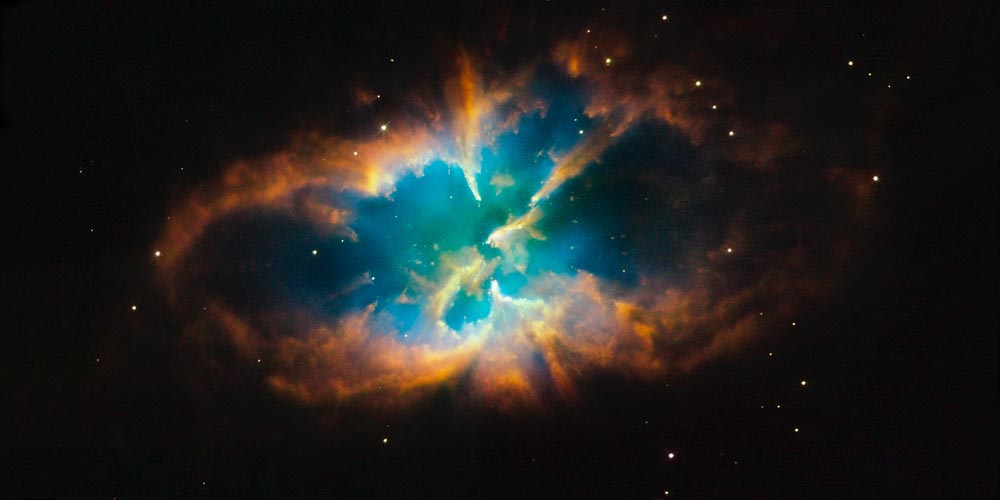
Description: Planetary Nebula
Position (J2000): R.A. 09h 16m 06s.13 Dec. -36° 37' 36".88
Constellation: Pyxis
Distance: 10,400 light-years (3.2 kiloparsecs)
Dimensions: This image is roughly 2 arcminutes (6.5 light-years or 2 parsecs) wide.
Instrument: WFPC2
Exposure Date(s): November 27/28, 2008
Exposure Time: 2.1 hours
Filters: F502N ([O III]) -blue, F656N (H-alpha) -green, and F658N ([N II]) -red
Image Credit: NASA, ESA, and the Hubble Heritage Team (STScI/AURA)
Release Date: January 15, 2009
ABOUT THIS IMAGE:
The Hubble Space Telescope has imaged striking details of the famed planetary nebula designated NGC 2818, which lies in the southern constellation of Pyxis (the Compass). The spectacular structure of the planetary nebula contains the outer layers of a star that were expelled into interstellar space.
The glowing gaseous shrouds in the nebula were shed by the central star after it ran out of fuel to sustain the nuclear reactions in its core. Our own sun will undergo a similar process, but not for another 5 billion years or so. Planetary nebulae fade gradually over tens of thousands of years. The hot, remnant stellar core of NGC 2818 will eventually cool off for billions of years as a white dwarf.
NGC 2818 is often heralded as one of the Galaxy’s few planetary nebulae to be discovered as a member of an open star cluster. The other celebrated case is the planetary nebula NGC 2438 in the open star cluster designated Messier 46. Recent investigations, however, suggest that both cases merely amount to a chance alignment, as the objects are actually located at varying distances along the line-of-sight. To date, there has yet to be a single established case of a Galactic planetary nebula discovered in an open cluster.
Planetary nebulae have been detected in several globular star clusters in our Galaxy. These densely-packed, gravitationally-bound groups of 100,000s to millions of stars are far older than their open cluster counterparts.
This Hubble image was taken in November 2008 with the Wide Field Planetary Camera 2. The colors in the image represent a range of emissions coming from the clouds of the nebula: red represents nitrogen, green represents hydrogen, and blue represents oxygen.